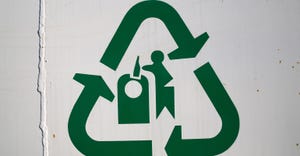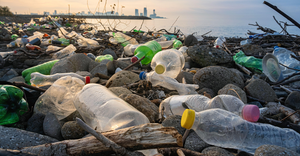Associations such as the Environmental Industry Associations (EIA), Washington, D.C., offer many important, tangible benefits to their members - advocacy on state and federal issues, technical information, antitrust protection, and education, to name a few. One of the principal, but perhaps less well-known EIA activities is developing safety standards for the waste and recycling industry.
Whether you manufacture, distribute or use waste industry equipment, these standards affect your company and its operations. Key benefits of complying with a strong standards program include worker safety, greater productivity due to reduced lost workdays and minimization of costly product liability claims.
EIA's Role in ANSI Standards The waste and recycling industry's official safety standards are the American National Standards Institute (ANSI) Z245 Standards for Equipment Technology and Operations for Wastes and Recyclable Materials. These standards are developed through a committee/subcommittee structure comprised of waste industry members.
EIA has overseen the standards development for nearly three decades. The organization has co-sponsored the ANSI Z245 Committee since 1972 with funding, technical expertise and staffing provided by EIA's Waste Equipment Technology Association (WASTEC).
Historically, WASTEC has developed and provided the lion's share of the findings for the ANSI Z245 standards. Ideas for new standards often come from WASTEC members - equipment manufacturers, distributors and consultants - organized into project work groups, such as mobile collection and transportation equipment, containers, compactors, balers and materials recovery facilities (MRFs).
Their ideas are turned over to the proper Z245 subcommittee to draft into a new standard, using input from all segments of the industry, including equipment users, municipalities, labor regulators and others.
Although the standards are referred to as ANSI standards, the organization has a limited role in their development. ANSI is a privately funded organization representing the private and public sectors. It coordinates the standards system for thousands of products by establishing the rules and procedures of due process that standards developers accredited by ANSI - such as the EIA - must follow.
ANSI only will approve a standard after it has verified that the rules have been followed, including making sure the process is open to all interested parties and that all views and opinions are considered.
ANSI standard development is an elaborate process, with a goal of developing a standard acceptable to all committee members. Before becoming official, ANSI standards must be approved by applicable subcommittees and committees, the public must be given a chance to comment on them, and the ANSI Board of Standards Review must consider them.
Once they do become official, ANSI standards often are quoted in federal regulations, making them enforceable. In addition, the standards can become the basis for Occupational Safety and Health Administration (OSHA), Washington, D.C., safety guidelines or the basis for a citation or fine following an OSHA inspection.
State and federal courts also recognize voluntary standards. If a fatal accident or accident that involves a serious injury results in a lawsuit, the plaintiff's attorneys can use a voluntary standard as a weapon. If the plaintiff shows that the defendant failed to comply with a known standard, voluntary or not, the penalties can be severe and costly. Juries will punish companies that ignore industry standards with compensatory and punitive damage awards.
The EIA manages development of industry standards to ensure that end users can be confident in the ability of products to reliably and safely perform their functions (did you ever wonder why all light bulbs fit into a socket?). Also, standards compliance is a useful marketing tool that helps U.S. manufacturers - also EIA members - expand into overseas markets.
EIA's standards development also serves as a buffer against state and federal regulations, and government intervention that can be disruptive to business operations. The process provides individuals involved in standards development networking opportunities and the chance to demonstrate leadership on safety and related technical issues.
Anatomy of the Standards Each ANSI Z245 standard specifies requirements, or clauses, that equipment manufacturers and modifiers must meet to ensure that they manufacture, install, repair, modify and remanufacture safe equipment. The clauses outline the duties and responsibilities of equipment owners and other equipment users, including training, equipment inspection and maintenance, recordkeeping and safe work practices. The standards also outline operational requirements that specify safety features, such as machine guards and sustained manual pressure controls, which must be designed into the equipment and maintained by the user.
ANSI Z245 waste and recycling industry standards establish safety and compatibility requirements for the manufacture, reconstruction, modification, maintenance, service, operation and installation (where applicable) of the covered equipment, and apply to all persons and organizations that come into contact with the covered equipment during its product life cycle. Standards do not dictate a specific design to achieve the safe performance. That is left to the creativity and ingenuity of product manufacturers, within reason.
The ANSI Z245 standards' clauses state a scope and purpose of the standard and specify an effective date. The scope of the standard indicates who the standard applies to and the purpose states the standard's goal. The effective date is established to allow manufacturers enough lead time to make necessary changes in their production processes to manufacture compliant equipment.
There is a clause for the definitions of the terms used within the standard, and also one for normative references, which are other documents, including other standards and government regulations, incorporated into the standard. These references, similar to standards, must be followed to be compliant with a Z245 standard - even though they are not published within the standard.
Additionally, there are clauses outlining manufacturers' requirements for designing and making equipment, and other clauses for employees and employers outlining how to use the equipment safely and to indicate any required training.
The ANSI Z245 Committee The Accredited Standards Committee (ACS) Z245 comprises waste industry professionals in labor, distribution, trade association, insurance, regulatory, consumer, manufacturing, and public and municipal user categories.
Committee members, who ensure the ANSI process is followed, represent their respective interest categories, not those of the companies that employ them. The committee also resolves disputes concerning drafts before they go out for public comment.
ANSI, which accredits the committee, recently extended accreditation for an additional five years. To remain accredited, ANSI policies must be followed during the standards development process, which:
* Must be open to all interested and materially affected parties;
* Must not have economic barriers barring participation;
* Must follow the rules of due process; and
* Must have an appeals process in place.
The committee has eight subcommittees, which draft the technical content of the standards. The subcommittees are: Mobile Collection and Transportation Equipment; Stationary Compactors; Container Safety; Facilities; Balers; Container Compatibility; Size Reduction Equipment; and Tub Grinders.
The ANSI Z245 Family Virtually every EIA member manufactures, distributes or uses a piece of equipment subject to an ANSI Z245 standard. The current library of ANSI Z245 standards includes:
* ANSI Z245.1-1992, Refuse Collection, Processing and Disposal Equipment, Mobile Refuse Collection and Compacting Equipment Safety Requirements (Revision to be published in 1999): Covers the variety of mobile equipment used in the waste industry, including front, rear and side loaders, roll-off trucks and recycling vehicles.
* ANSI Z245.2-1997, For Equipment Technology and Operations for Wastes and Recyclable Materials Stationary Compactors Safety Requirements: Covers equipment used in waste recycling operations and units used in apartment, commercial and industrial settings.
* ANSI Z245.30-1994, Refuse Collection, Processing and Disposal Equipment Waste Containers Safety Requirements (Revision to be published in 1999): Establishes stability, labeling and other requirements for all residential, commercial and industrial waste and recycling containers.
* ANSI Z245.41-1997, For Equipment Technology and Operations for Wastes and Recyclable Materials Facilities for the Processing of Commingled Recyclable Materials Safety Requirements (Approved in 1997): Provides comprehensive coverage of the processes and systems used in a modern MRF.
* ANSI Z245.5-1997, For Equipment Technology and Operations for Wastes and Recyclable Materials Baling Equipment Safety Requirements: Governs all balers used in the waste and recycling industries. It was revised in 1997 to reflect the larger and more complex balers that have been developed by WASTEC members.
* ANSI Z245.60, Refuse Collection, Processing and Disposal Equipment Waste Containers Compatibility Dimensions: Sets dimensional compatibility for containers and equipment designed to lift and dump containers, and facilitates the identification of compatible containers and lifting devices. The latest standard revision will be published in 1999.
* Draft ANSI Z245.70, For Equipment Technology and Operations for Wastes and Recyclable Materials Size Reduction Equipment Safety Requirements: Covers shears and related equipment, auger processors, chippers, dicers, rotary drum processors, shear shredders, grinders, granulators, hammermills and crushers. This draft is scheduled to be sent to ANSI for approval by December 1999.
* Draft ANSI Z245.7A, For Equipment Technology and Operations for Wastes and Recyclable Materials Mobile Industrial Tub Grinders Safety Requirements.
Standards for transfer stations, landfills and mixed waste processing facilities are in the planning stages.
Once a standard is developed, ANSI's bylaws require it be updated or re-affirmed every five years. Therefore, WASTEC members frequently review the Z245 standards and suggest that the Z245 committee modify them when appropriate.
At WASTEC's March 1999 Winter Technical Conference, the WASTEC Processing Equipment Project Working Group discussed revising the ANSI Z245.5 baling equipment standard and the Z245.2 standard for compactors.
It is likely that the ANSI Z245 subcommittees responsible for these standards will meet later this year to begin the revising process, which takes between two and three years. By starting this year, the standards will be ready within the five year time limit that ANSI sets for standards to be updated, revised or reaffirmed.
Developing standards is at the heart of being part of a trade association. The process and standards developed after years of debate benefit the companies involved, their customers and the general public. EIA, WASTEC and its members toil in relative obscurity to develop these standards, yet little the associations do is more important.
Additional information concerning EIA's development of ANSI Z245 standards is contained in the "Environmental Industry Associations Manual of Recommended Safety Practices" published in June 1999. This comprehensive guide to safety in the waste and recycling industries is available for purchase by calling EIA's publications department toll-free (800) 424-2869.
Companies interested in joining WASTEC and/or participating in the development of ANSI Z245 standards can contact Kim Benz at the toll-free number.
About the Author(s)
You May Also Like




